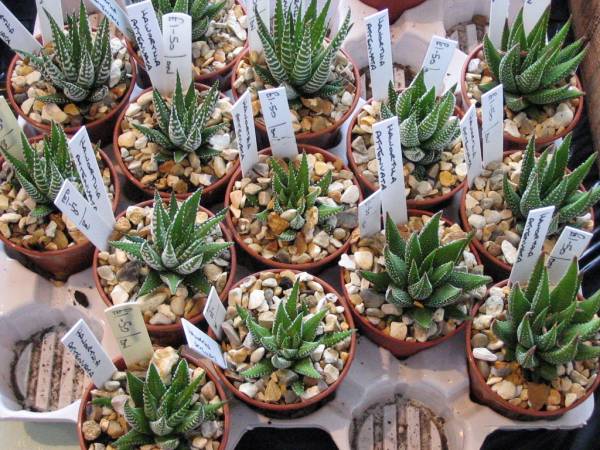
| Haworthia attenuta comes from South Africa. It is easy to grow and readily forms offsets. The flowers are rather insignificant, and the plant is mainly grown for the markings on the leaves. These vary from irregular dots to almost solid white lines. |
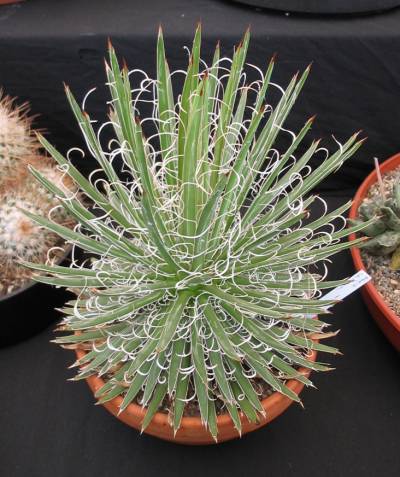
| This is an agave, and it originates from America. Agaves make attractive specimen plants and they vary considerably in size, with some species growing to a size of three or four feet across. Agaves die after flowering, but by then the plant should have formed offsets or set seed. |
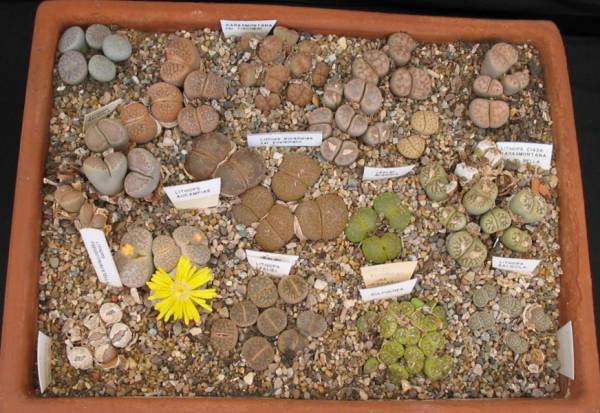
| Lithops grow in South Africa and Namibia. Their body colours resemble the type of soil and terrain they grow in, so they are well camaflouged in the wild. New plant bodies start to emerge from within the old bodies (which shrivel and die back) in late spring. This annual renewal means that the plants always look nice and fresh each year. Once mature, they form white or yellow flowers in late summer. |
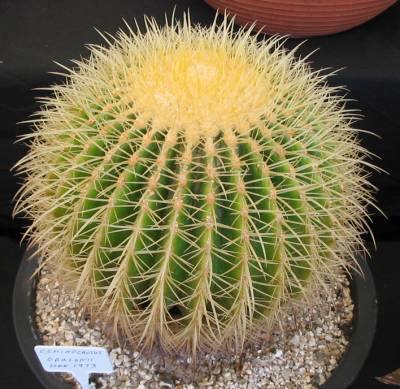
| Echinocactus grusonii comes from Mexico and in habitiat it can grow to a few feet in diameter. The plant is slow growing, and the featured plant has taken 25 years to grow to the size of a football. White spined and spineless forms also exist, but the original golden-spined plant remains a favourite. |
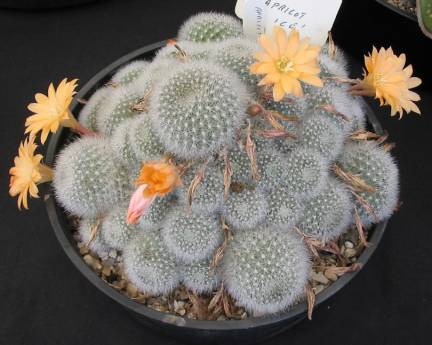
Rebutias come from Bolivia and Argentina in South America. Most are easy to grow and they make ideal plants for beginners. The plant shown here is Rebutia "Apricot Ice" - which is a selected hybrid with apricot-coloured flowers. If you can't find it, then try the much more common Rebutia muscula which looks similar and has bright orange flowers. Rebutias are generally easy to grow from seed and can flower in just 2 years.